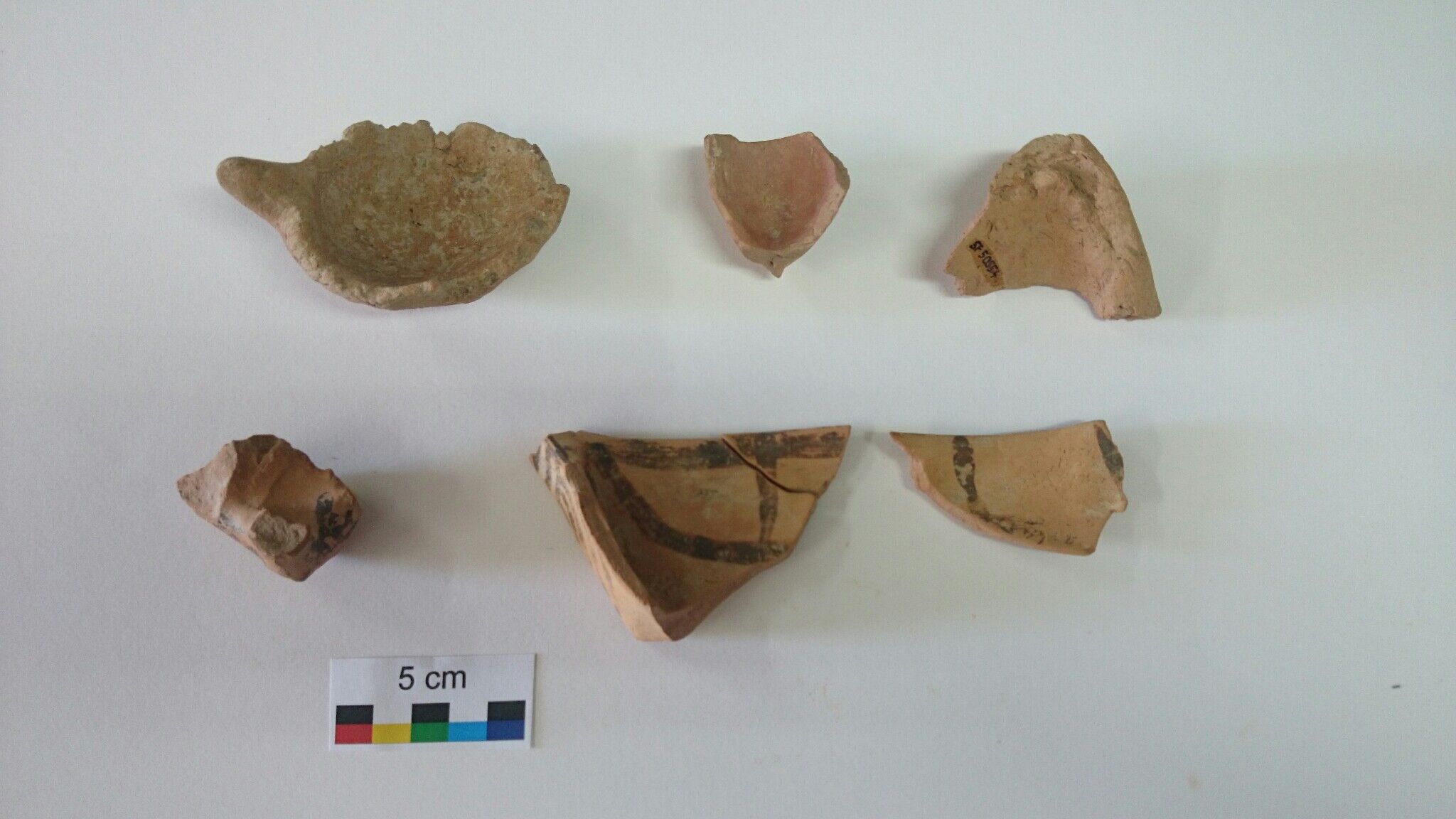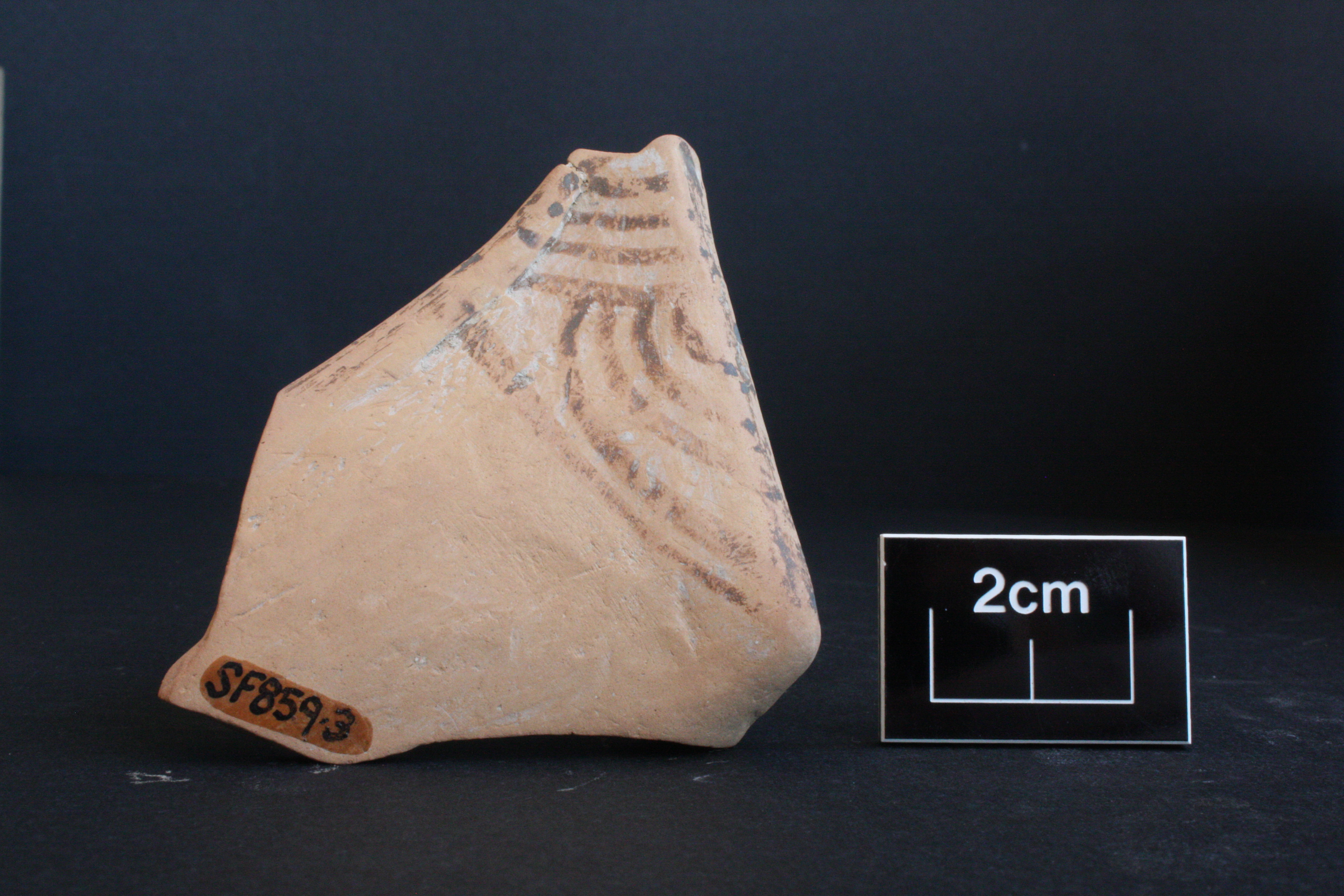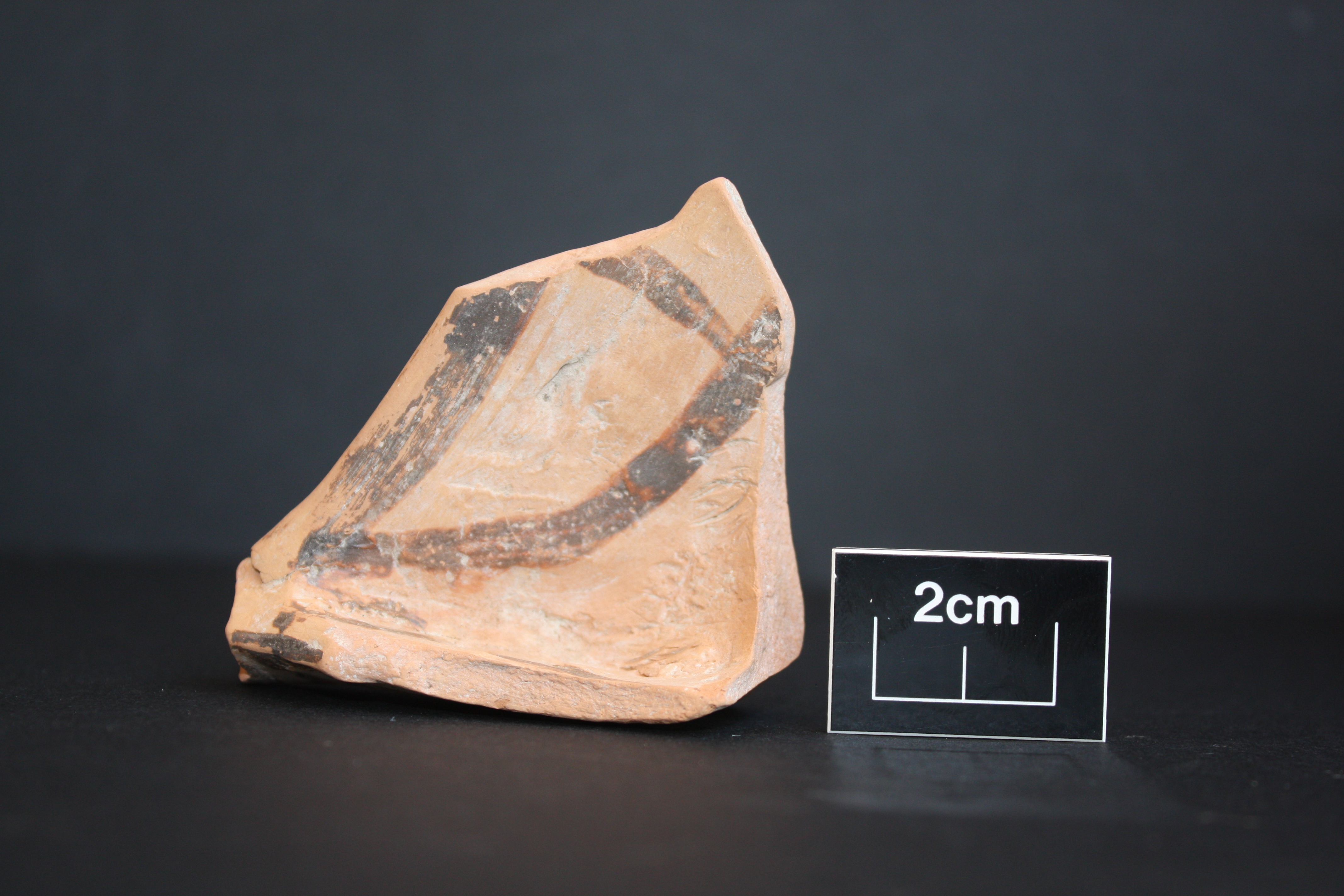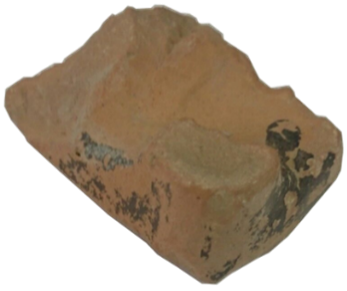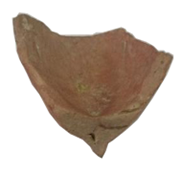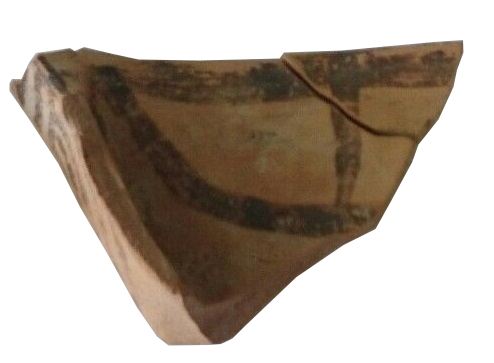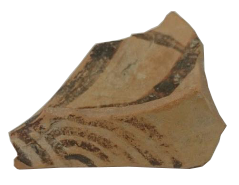A29a: Fragmentary model in three fragments preserving parts of one
extremity. The hull is V-shaped in profile. Vertical stempost decorated
with groups of semicircles on the sides on the outside, delimited on the
bottom by an oblique line running from the gunwale to the base of the
stempost. On the inside, the sides of the hull have two painted
horizontal lines - one along the gunwale, the other at the base of the
hull (keelson) which curves upwards to join the other at gunwale level
near the stempost. There is one preserved vertical line (rib ?) joining
the two.
A29b: Fragmentary model preserving parts of one extremity with worn
decoration. Bow or stern. Stump preserving the base of a mast.
A29c: Fragmentary model preserving parts of one extremity. The hull
is bowl-shaped with a pinched keel that protrudes outward.
A29d: Fragmentary model of a small rowed craft preserving the bow.
Simple dish-shaped modelling, prow pinched.
Four fragmentary ship models
A29a-d
LH IIIC
Lefkandi, Ritual Zone. A29a-c: Region II west and south of city wall; A29d: Region I
A29a: L: 6.6 cm; H: 4.2 cm; W: 5.9 cm; th: 1.1. cm
A29b: L: 4 cm; H: 2.7 cm; W: 5 cm; th: 1.9 cm
A29c: L: 3.9 cm; H: 2.5 cm; W: 3.9 cm; th: 1.2 cm
A29d: L: 4.4 cm; H: 1.6 cm; W: 2.9 cm; th: 0.7 cm
Fragmentary terracotta models
A29a: 3 fragments, 2 joining. Very fine light reddish-brown fabric, reddish yellow surface, dusky red paint
A29b: Very fine light red fabric, dark reddish gray paint
A29c: fine pale red fabric, monochrome red slip, lumpy surface
A29d: fine reddish-brown fabric
A29a: SF 859.3; A29b: SF 5067.1; A29c: SF 5101.6; A29d: SF 5356.1
Lemos 2006-2007: 38-40, fig. 47; Thurston 2015
The ritual zone at Xeropolis is comprised of a series of stratigraphically superimposed square stone structures (structures A, B, C) in use between early LH IIIC and the PG period and a large landscaped "hollow" which was delimited by a substantial wall (Lemos 2007: 40; 2008: 54). In the current preliminary stage of analysis, structures A and B are considered to have been contemporary (initial phases of LH IIIC), while structure C and two more structures (one to its north, another to its west) were operating during the final phase of use of this area (LH IIIC late and MPG). The latter were bound to the east by a substantial wall, on the other side of which there is a noticeable drop over 6 to 8 meters into a distinctive "hollow" within which no structures have been identified. Although the hollow had two episodes of deposition (LH IIIC and a PG), the divisions between them is not consistently distinguishable.
The "ritual zone" is characterized by the unusual density of figurine deposition, with about 70% of all the figurines excavated at Xeropolis between 2003 and 2008 coming from this specific area which represents 20-25% of the total excavated area of Xeropolis (400 m2). The deposition of figurines around the hollow and in the structures is currently understood to represent their primary usage context. Another significant aspect is that the concentration of types is distinctive, in that all of the weelmade figurines and the majority of monochrome bovid figurines and boat models were discovered in this area. Some of the notable trends amongst the figurines of the "ritual zone' include the unusually high number of monochrome bovid figurines (infrequent in LH IIIC) and bird figurines (uncommon from end of LH IIIB onwards), and the significant presence of large wheelmade figures. Thurston concludes that their votive use can be reasonably inferred from the fact there is an obvious concentration of uncommon types which combined with their large quantity points to a "repeated, consistent, high-frequency use of objects."(Thurston 2015). She also argues for the possible presence of a 'premium' economy in the production of terracotta figurines at the site, given the high level of involvement (extra clay and fuel, time, effort, skill) required to produce the wheelmade figures (Ibid: 66-76). The Protogeometric repertoire of figurines at Xeropolis is highly accomplished in execution and displays a widely varied iconography that includes horses, bovids, boats, and wheelmade figurines on wheels and mounted on plinths. Since the study of the pottery is not complete, there is a possibility that some of the PH figurines actually date to the final stages of LH IIIC.
Four boat models have been positively identified from the 2003-2008 excavations, with a further three fragments being of dubious interpretation. Two of the boat models were found in the areas immediately west and south of the "city wall" which delineates the 'hollow' and another from Region I, while the most elaborate one (A30) came from the 'hollow' itself. Although A29a-c all show clearly distinguishable technical details represented in both paint and modelling (pinched keels, gunwales, keelsons), each showcases unique characteristics, suggesting that they were not mass-produced despite being consistently deposited and having a special relevance at the site. There is therefore an observable trend where the type was consistently deposited while the individual examples themselves exhibit strong variation and detailing. Related to the boat models is another popular figurine type at Xeropolis which is otherwise uncommon in the Aegean from the end of LH IIIB onwards, namely birds. The long backwards-curving neck of one of the preserved examples suggests they are water birds.
Lemos, I.S. 2006-2007. “Lefkandi,” in J. Whitley et al. (eds.) Archaeology in Greece 2006-2007. Archaeological Reports 53. The Society for the Promotion of Hellenic Studies, pp. 38-40.
Thurston, C. 2015. The Co-occurrence of Terracotta Figures and Figurines in Mainland Greece, Euboea, the Dodecanese, the Cyclades and the Northern Aegean Islands, 1200-700 BC, PhD thesis, University of Oxford.



